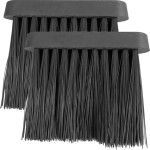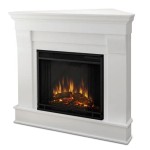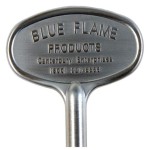Stone Outdoor Fireplaces: A Timeless Addition to Outdoor Living Spaces
Stone outdoor fireplaces represent a confluence of aesthetics and functionality, providing warmth, ambiance, and a focal point for outdoor living spaces. Their enduring appeal stems from the natural beauty of stone, the inherent durability of the material, and the customizable designs that can complement a wide range of architectural styles. This article will explore the multifaceted aspects of stone outdoor fireplaces, encompassing their design considerations, construction materials, installation processes, and maintenance requirements.
### Design Considerations for Stone Outdoor FireplacesThe design of a stone outdoor fireplace is paramount to its success, requiring careful consideration of various factors to ensure both visual appeal and functional performance. The first consideration is the overall style of the outdoor space. A rustic, naturalistic landscape might benefit from a fireplace constructed with rough-hewn fieldstone, while a more contemporary setting could favor a sleek, linear design incorporating smooth, stacked stone. The size and scale of the fireplace must also be proportional to the surrounding environment. A massive structure in a small patio can overwhelm the space, whereas a diminutive fireplace might be lost in a sprawling backyard.
Beyond aesthetics, functionality plays a crucial role in the design process. The fireplace's primary purpose – whether it's for cooking, providing warmth, or simply creating ambiance – will influence its dimensions, firebox design, and chimney height. A fireplace intended for cooking will require a larger firebox and potentially a built-in grill or cooking surface. A fireplace designed for warmth should have a strategic opening to effectively radiate heat outward. Proper chimney height is essential for ensuring adequate draft and preventing smoke from billowing back into the seating area. Furthermore, the prevailing wind direction should be considered to minimize the risk of smoke interference.
The incorporation of surrounding elements is another key design consideration. Built-in seating, storage for firewood, and integrated lighting can enhance the functionality and aesthetic appeal of the fireplace. Careful landscaping can further integrate the fireplace into its surroundings, creating a seamless and inviting outdoor living space. The surrounding materials should also complement the stone chosen for the fireplace. For instance, a flagstone patio pairs well with a fieldstone fireplace, while a concrete patio may be better suited to a sleek, manufactured stone veneer fireplace.
Finally, local building codes and regulations must be taken into account during the design phase. Setback requirements from property lines, height restrictions, and fire safety regulations can all impact the design and placement of the fireplace. Consulting with a qualified architect, landscape designer, or contractor is essential to ensure compliance with all applicable codes.
### Construction Materials and TechniquesThe choice of construction materials profoundly impacts the durability, aesthetic appeal, and overall cost of a stone outdoor fireplace. Natural stone options abound, each with unique characteristics and visual qualities. Fieldstone, with its irregular shapes and rustic texture, is a popular choice for creating a natural, organic look. Limestone, known for its smooth surface and neutral tones, offers a more refined and elegant aesthetic. Sandstone, with its warm hues and distinct grain patterns, provides a versatile option that can complement a variety of architectural styles. Granite, prized for its exceptional durability and resistance to weathering, is an excellent choice for fireplaces in harsh climates.
Manufactured stone veneer provides a cost-effective alternative to natural stone. These veneers are typically made from concrete and molded to resemble natural stone. They offer a wide range of colors, textures, and styles, allowing for greater design flexibility. While not as durable as natural stone, manufactured stone veneers are still resistant to weathering and can provide a long-lasting aesthetic. They are also lighter in weight, making them easier to install and potentially reducing the need for extensive structural support.
The construction of a stone outdoor fireplace typically involves several stages. First, a solid foundation is essential to support the weight of the structure. This foundation is typically made of concrete and must be properly sized and reinforced to prevent settling or cracking. Second, the firebox, where the fire is contained, is constructed using fire-resistant bricks or refractory concrete. The firebox must be properly insulated to protect the surrounding structure from heat damage. Third, the chimney is constructed to ensure proper draft and venting of smoke. The chimney is typically built using fire-resistant bricks or masonry blocks and lined with a flue liner to prevent creosote buildup.
The stone facing is applied to the exterior of the fireplace, concealing the underlying structure and providing the desired aesthetic. The stone can be applied using a variety of techniques, including dry-stacking, mortaring, and veneering. Dry-stacking involves carefully arranging the stones without mortar, creating a natural, rustic look. Mortaring involves using mortar to bind the stones together, providing a more secure and durable structure. Veneering involves attaching thin slices of stone to a supporting wall, creating a lightweight and cost-effective alternative to full-depth stone construction.
Proper drainage is essential to prevent water damage to the fireplace. A drainage system should be incorporated into the design to channel water away from the foundation and the firebox. This can involve installing weep holes, grading the surrounding area, and installing a drainage pipe.
### Installation, Maintenance, and Safety ConsiderationsThe installation of a stone outdoor fireplace is a complex process that requires specialized skills and knowledge. Hiring a qualified contractor with experience in fireplace construction is essential to ensure a safe and functional installation. The contractor should be familiar with local building codes and regulations and should be able to properly size the fireplace, construct the foundation, build the firebox and chimney, and apply the stone facing.
Regular maintenance is crucial to ensure the longevity and safe operation of a stone outdoor fireplace. The chimney should be inspected and cleaned annually to remove creosote buildup, which can pose a fire hazard. The firebox should be inspected for cracks or damage and repaired as needed. The stone facing should be cleaned periodically to remove dirt, debris, and stains. A pressure washer can be used to clean the stone, but care should be taken to avoid damaging the mortar or the stone itself.
Safety is paramount when using and maintaining a stone outdoor fireplace. Never leave a fire unattended and always keep a fire extinguisher or a water hose nearby. Ensure that the area around the fireplace is clear of flammable materials, such as dry leaves, brush, and furniture. Supervise children and pets closely when the fireplace is in use. Use only seasoned firewood, as green or wet wood can produce excessive smoke and creosote buildup.
When starting a fire, use kindling and small pieces of wood to gradually build the flames. Avoid using flammable liquids, such as gasoline or kerosene, to start the fire. Never overload the firebox with wood, as this can create excessive heat and potentially damage the fireplace. When extinguishing the fire, allow the embers to burn down completely. Never pour water on the fire, as this can create steam and potentially damage the firebox. Dispose of ashes properly in a metal container with a tight-fitting lid.
In climates with freezing temperatures, special precautions should be taken to protect the fireplace from damage. Water can penetrate the stone and mortar, and when it freezes, it can expand and cause cracking. Sealing the stone and mortar with a waterproof sealant can help to prevent water penetration. Covering the fireplace during the winter months can also provide added protection from the elements. Furthermore, inspect the fireplace in the spring for any signs of damage that may have occurred during the winter.
Modifying the fireplace without professional consultation is strongly discouraged. Alterations to the design or construction can compromise its structural integrity and potentially create a fire hazard. Always consult with a qualified contractor before making any changes to the fireplace.

How To Build An Outdoor Stacked Stone Fireplace

Outdoor Fireplace Kits Stonewood S Cape Cod Ma Nh Ct

Outdoor Stone Paver Firepits Fireplaces Installer Minneapolis St Paul

Outdoor Stone Fireplace Landscaping Network

Pull Up A Chair And Light The Night 15 Natural Stone Fireplaces Fire Pits

Outdoor Fireplaces Round Grove S

Stonetutorials Living Stone Masonry

Diy Outdoor Fireplace Kit Fremont Makes Hardscaping And Easy

Natural Stacked Stone Veneer Fireplace Ideas

Outdoor Fireplace Design Ideas
Related Posts








